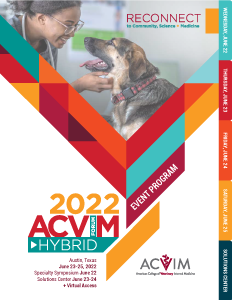To Earn CE for this Session: Watch the on-demand recording in its entirety to unlock the CE quiz. Then click here to complete the CE quiz for this session.
Research Abstract - Oral
Small Animal Internal Medicine
GI09 - Utility of Fluorescence Imitating Brightfield Imaging Microscopy for the Diagnosis of Feline Chronic Enteropathy

Sarah G. Au Yeung, BS
Veterinary Student
UC Davis School of Veterinary Medicine
Woodland, California, United States
Research Abstract - Oral Presenter(s)
Background: Fluorescence Imitating Brightfield Imaging (FIBI) is a novel microscopy method allowing for real-time, non-destructive, slide-free tissue imaging of fresh, formalin-fixed, or even paraffin-embedded tissue. The non-destructive nature of technology permits tissue preservation for further downstream analysis.
Hypothesis/Objectives: To assess the utility of FIBI compared to conventional H&E-stained histology slides in feline gastrointestinal histopathology.
Animals: Formalin-fixed paraffin-embedded (FFPE) full-thickness small intestinal tissue specimens from 50 cases of feline chronic enteropathy (FCE).
Methods: Observational study. The ability of FIBI to evaluate predetermined morphological features (epithelium, villi, crypts, lacteals, fibrosis, submucosa, muscularis propria) and inflammatory cells was assessed on a 3-point scale (0 = FIBI cannot identify the feature; 1 = FIBI can identify the feature; 2 = FIBI can identify the feature with more certainty than H&E). H&E and FIBI images were also scored according to World Small Animal Veterinary Association (WSAVA) Gastrointestinal Standardization Group guidelines.
Results: FIBI identified morphological features with similar or in some cases higher confidence compared to H&E images (subscore 0.90). The identification of inflammatory cells was less consistent (subscore 0.48). FIBI and H&E showed an overall poor agreement with regards to the assigned WSAVA scores.
Conclusions and clinical importance: While FIBI showed an equal or better ability to identify morphological features in intestinal biopsy specimens, identification of inflammatory cells is currently inferior compared to H&E-based imaging. Future studies on the utility of FIBI as a diagnostic tool for non-inflammatory histopathologic lesions are warranted.

